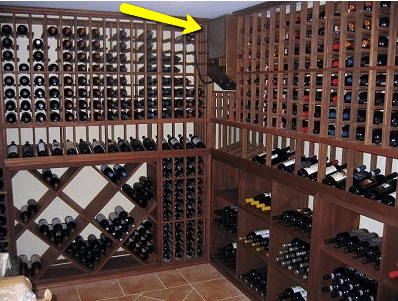The insulation factor that you see here in the middle, which is on the cold side of the vapor barrier, helps retain or keep the cool air in the wine room, as any typical insulation to a home or a business would. I think if you read through this, you will find different ways that these wall cavities can be prepared with vapor barriers and insulations.
There’s actually two ways. There’s the old school way where a 6 mil or 8 mil plastic sheeting is used; and there’s also a more modern technology, it’s a blow in foam expanding insulation that a contractor would actually blow into the wall cavity. It’ll expand, dry, and it is a far more accurate or better way, I should say, although it is a little pricier.
I’m here for any of your questions regarding wine cellar cooling Los 
People in the northeast or in any cold climate, and especially if they are in basements or below ground level, it’s typically very cool and appropriate temperatures, so wine cellar climate control units may never actually be added. This is referred to as a passive cellar or it is either naturally cooled or the collector has decided not to cool the wine room for whatever reason.
Just to summarize, it is very important that a wine room be prepared properly for refrigeration. Even if you don’t add the wine cellar cooling unit during the course of wine cellar construction, it’s very important that the wine room itself be prepped properly, so that later down the road the client decides to add a cooling unit, he doesn’t have to tear out the walls and start from square one.
Again, if you have any questions, you may call or send an email. Cheers!
